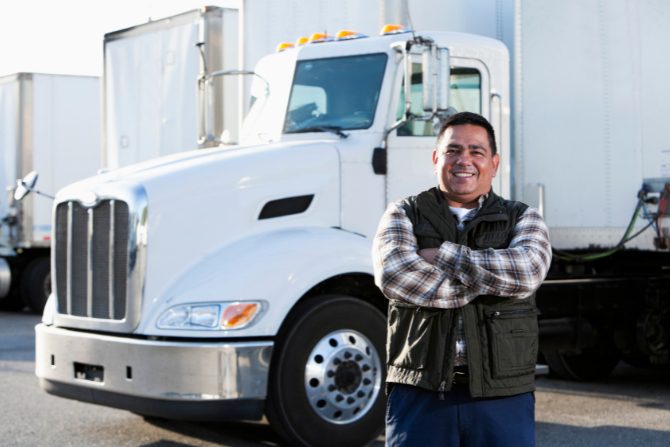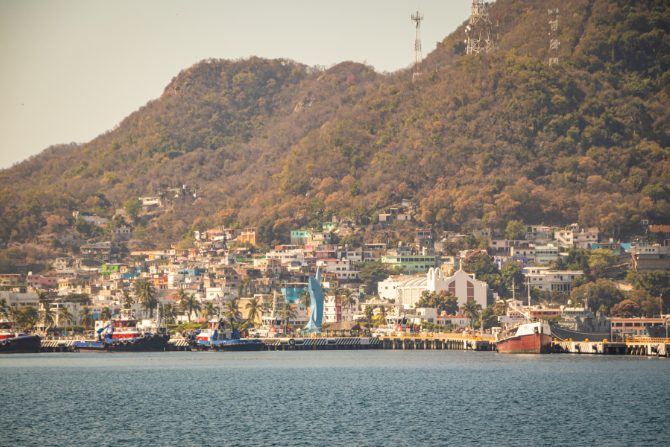
Welcome to the blog adaptation of a game-changing podcast episode where Dave McQueen chats with Leticia Rodriguez, our Director of Marketing, Carrier Development and Operations at The ILS Company. If you’re an entrepreneur or business leader eyeing Mexico’s booming manufacturing landscape, then you’re in the right place.
In a fast-paced world, understanding the intricacies of shipping and logistics is crucial—especially when you’re dealing with cross-border operations like manufacturing in Mexico. Leticia starts off by explaining IMMEX, a certification that offers tax perks and the luxury of importing raw materials without duties. But we’re just getting started.
Ever curious about how trucking in Mexico contrasts with the U.S.? Or how to effectively navigate jam-packed ports? We’ll cover essential information like why shipment and cargo insurance is a must-have. And don’t be fooled—customs is anything but straightforward. Given Mexico’s bureaucratic tendencies, being savvy about the customs process can save you both time and money.
From carrier rates and custom routes to best practices for clearing goods and pitfalls to dodge, we’ve got you covered. By the end of this read, you’ll not only grasp the logistics of manufacturing in Mexico but also come away with actionable tips to optimize your shipping endeavors.
So fasten your seatbelt and let’s plunge into the multifaceted world of manufacturing and shipping in Mexico!
Table of Contents:
- Understanding the Freight Demand Boom in Mexico’s Manufacturing Industry
- The Unique Landscape of Mexico’s Trucking Industry
- Security Measures for Shipping Goods in Mexico
- Ocean Shipping Challenges in Mexico
- Optimal Ports of Entry for Truck Traffic into Mexico
- FAQs in Relation to Manufacturing in Mexico
- Conclusion
Understanding the Freight Demand Boom in Mexico’s Manufacturing Industry
The manufacturing sector in Mexico is on a fast track. We’re seeing a significant surge in freight demand, turning heads across the global supply chain landscape.

Manufacturing in Mexico is booming, leading to a big increase in freight demand and grabbing global attention.
Mexico’s Thriving Manufacturing Scene
Mexico’s manufacturing industry has grown significantly in recent years, becoming a key player on the global supply chain landscape. From automobiles to electronics, industries are flourishing here like never before. But why does this matter? Well, when there are more factories running operations, they need the right raw materials and parts to get the job done on time and efficiently. This, in turn, drives up freight demand.
This uptick isn’t just a fluke either – it reflects robust growth trends within Mexican manufacturing itself. A blend of favorable trade policies such as USMCA, affordable labor costs and strategic geographic locations have helped propel this boom.
The Growing Need for Cross-Border Transportation Services
With increased production comes a greater need for cross-border transportation services too – especially between Mexico and its largest trading partner: The United States. Getting goods over that border swiftly yet safely requires specialized expertise that companies like The ILS Company can provide.
Our firsthand experience shows us how crucial efficient logistics operations are to booming industries’ success rates. And we do this by preventing bottlenecks or slowdowns that could impact their bottom lines negatively.
Facing Unique Challenges Head-On
No doubt about it – dealing with heightened freight demand brings unique challenges, too. Infrastructure limitations make road transport tricky at times, while ocean shipping faces issues due to port saturation, particularly around busy hubs like Manzanillo. But don’t worry – we’ve got this. With a strategic approach and seasoned expertise, our team at the ILS can navigate these challenges to ensure smooth sailing for your freight.
So, what’s our magic trick? It all boils down to knowing the law of the land in Mexico. We’ve got a deep understanding of every road, from busy highways to quiet country lanes. This helps us plan out the best routes — even when demand is sky high.
✐ Key Takeaway:
Mexico’s manufacturing boom is fueling the need for efficient freight services. It’s all thanks to the country’s diverse industry growth, solid trade policies, and prime location. But it isn’t without its hurdles – things like infrastructure issues and crowded ports can be tough nuts to crack. That’s where companies like the ILS come in handy – we’ve got Mexico figured out from top to bottom.
The Unique Landscape of Mexico’s Trucking Industry
Rather than envisioning the usual fleets of modern vehicles, a look towards Mexico reveals an entirely different landscape for the trucking industry.

Trucking in Mexico offers a different landscape compared to more modernized fleets commonly seen elsewhere.
Navigating Road Infrastructure Challenges
In Mexico, road infrastructure is less developed than in its northern neighbor. This poses unique challenges for businesses looking to transport goods across this terrain. The trucks are often older models that require more maintenance and can slow down deliveries.
At ILS, we’ve gained valuable experience that enables us to manage operations much more efficiently, even in the face of such challenges.
Understanding Operator Demographics
An interesting facet of the Mexican trucking industry lies in its operator demographics. Unlike the US, where major corporations dominate the landscape, smaller family-owned businesses or ‘mom and pop’ operators play a significant role here.
This could be seen as a disadvantage due to slow adoption of the latest technologies for carrier vetting, but there’s another side to this coin. These small-scale operators provide personalized service that larger entities might not be able match – they know their routes intimately because they’ve been driving them for years.
If you’re considering shipping freight through Mexico, remember: while different from U.S., it has its own set of advantages worth exploring.
Security Measures for Shipping Goods in Mexico
Theft and hijacking are serious concerns when transporting goods in Mexico. But don’t fret, with the right measures in place, you can safeguard your cargo like a pro.

Security risks like theft are a concern in Mexico’s logistics, but proper safeguards can protect your cargo effectively.
The Importance of Cargo Insurance
Cargo insurance isn’t just a good idea; it’s essential when shipping goods within Mexico. Why? Well, let’s get real about this – Mexican carriers’ coverage may not cut it if things go south.
It’s kind of like going to a potluck dinner where everyone brings their own dish. You wouldn’t rely on others to bring enough food for you too, would you? So why take that chance with your precious cargo?
By having robust cargo insurance, you’re making sure that no matter what happens during transit – theft or otherwise – your business won’t be left holding the bag (or an empty truck bed).
Gearing Up Against Theft and Hijackings
Safety doesn’t happen by accident. At The ILS Company, we’ve learned through years of experience how important security protocols are for shipments crossing into or out of Mexico.
You’ll need more than luck on your side while navigating these roads. Think: high-tech tracking systems and well-trained drivers who know how to handle any sticky situation they might encounter on their route.
Picking Your Partners Wisely
When moving goods across borders, your choice of transportation partner is as critical as the route itself. Consider working with experienced providers who understand local regulations and customs procedures inside-out—it helps you avoid other headaches down the line.
We also suggest taking the time to evaluate their safety records and asking for references from other businesses they’ve worked with. This isn’t a quick fix; it’s about forming lasting connections that can help your business grow
Why the Right Partner Makes All the Difference
Moving goods in Mexico can feel like navigating through a maze, but with the right partner, you’ll have someone who’s ‘been there, done that’ guiding you all along.
Worried about safety when sending stuff across Mexico? You might want to team up with seasoned logistics pros like Leticia Rodriguez from The ILS Company, who can help you sidestep common pitfalls and ensure your operations run smoothly and efficiently.
✐ Key Takeaway:
Shipping goods in Mexico can feel like a moving through a maze of bureaucratic requirements, but don’t sweat it. You can safeguard your cargo with robust insurance and security measures – no more relying on luck. Partner up with experienced providers who know the ins-and-outs of local regulations. Remember, this isn’t speed-dating; you’re supposed to build lasting relationships for smooth sailing
Ocean Shipping Challenges in Mexico
When it comes to ocean shipping, Mexico’s ports often experience saturation. The port of Manzanillo is a prime example of this problem. This saturation can lead to delays in customs processes, creating additional hurdles for businesses relying on timely deliveries.
World Bank reports highlight that effective management of these challenges could be pivotal for trade development and poverty reduction strategies. So let’s take a closer look at some specific issues related to ocean shipping within Mexico.

Mexican ports like Manzanillo often face congestion, causing customs delays and impacting businesses. Effective management is crucial for trade development and poverty reduction.
The Impact of Port Saturation
Saturation at Mexican ports is more than just an inconvenience; it’s a significant barrier affecting smooth supply chain operations. It’s like trying to fit ten cars into five parking spaces – there simply isn’t enough room for everyone.
This issue primarily stems from increasing global trade volumes coupled with infrastructure limitations. Picture your favorite restaurant suddenly getting flooded by hungry customers – if they’re not prepared, service slows down or even grinds to a halt. That’s exactly what happens when our ports are overwhelmed by incoming shipments.
Navigating Customs Delays
A side effect of port congestion is extended wait times during customs clearance procedures. Imagine standing in line at the airport security check, but instead of minutes, you’re waiting days or weeks. As per UNCTAD’s Review Maritime Transport 2023 report, efficient and speedy processing through customs can dramatically improve the flow of goods and services, reducing costs for businesses.
With firsthand experience in the industry, we can tell you that advanced planning and understanding local customs regulations are key to overcoming these hurdles. Don’t be overwhelmed; leveraging the expertise of experienced partners can make a huge difference. Working with experienced partners who know how to manage these issues can be a game-changer.
The Role of Weather Conditions
Just like rough weather can throw off your flight or make driving risky, bad sea conditions also contribute to problems in ocean shipping. This includes saturation issues and customs delays.
✐ Key Takeaway:
Port Jams and Customs Hold-ups: Navigating Mexico’s crowded ports and customs delays is like a complex puzzle. It’s crucial to plan ahead, understand local regulations, and partner with people who know the ropes. Bad weather can make things more complicated, but remember – smooth seas never made a skilled sailor.
Optimal Ports of Entry for Truck Traffic into Mexico
Getting goods across the border efficiently is a major factor in international trade. Determining the best ports of entry for truck traffic between the US and Mexico is essential to ensure a streamlined supply chain.
The top contenders are Laredo, Tijuana, Nogales, and El Paso. But among these four, Laredo takes the crown as the most popular port due to its efficiency and accessibility. Its geographical position makes it an ideal gateway into Mexican markets.

Choosing the right U.S.-Mexico port of entry like Laredo, Tijuana, Nogales, or El Paso is key for an efficient supply chain. Laredo stands out for its efficiency and strategic location.
Navigating Customs Clearance in Mexico
Customs clearance is often viewed as an additional hurdle by many businesses shipping goods internationally.
To make sure everything goes smoothly during customs clearance, you need to have all your bases covered before the process starts. That means preparing all required documents well ahead of time and giving them over promptly to your chosen customs brokers.
This is especially important because clearing goods into Mexico takes around 50% longer than getting things cleared for entering the U.S. A lot of this comes down to more thorough inspections at initial stages. While every port may have specific requirements or processes based on their local regulations, overall, they follow similar procedures. This makes navigation easier once you get familiar with one port.
| Port of Entry | Pros |
|---|---|
| Laredo | Highest volume, best efficiency. |
| Tijuana | Frequent border crossings due to close proximity with San Diego. |
| Nogales | Ideal for goods originating from or destined for the west coast. |
| El Paso |
FAQs in Relation to Manufacturing in Mexico
Is Mexico a good place for manufacturing?
Mexico offers cost-effective labor, favorable trade agreements, and proximity to US markets. This makes it attractive for manufacturers.
What products are manufactured in Mexico?
Mexico manufactures an array of goods such as automobiles, electronics, aerospace components, medical devices and food & beverages.
Who are Mexico’s biggest manufacturers?
Ford Motor Company, General Motors Corporation and Volkswagen AG are among the biggest companies running major manufacturing operations in Mexico.
What are the Top 5 industries in Mexico?
The five dominant sectors include automotive manufacturing, electronics production & assembly industry, petroleum sector, agriculture industry and tourism services.
Conclusion
Manufacturing in Mexico is a dance, and every step is crucial. From the boom in freight demand to navigating trucking routes and managing ocean shipping issues — every step is crucial.
Security measures are vital, so don’t forget cargo insurance. This will be your shield against unexpected losses during transit.
Decide which port of entry is the most suitable based on efficiency and accessibility, such as Laredo, Tijuana, Nogales or El Paso. Pick the best ports for truck entry based on efficiency and accessibility. But be ready for customs – have all documents prepared well in advance!
Last but not least: communication! Maintain consistent communication with your logistics partner to keep your inventory flowing smoothly across borders.
With all these pieces, manufacturing in Mexico becomes an intriguing jigsaw puzzle that brings you new business opportunities once you put them in place.


